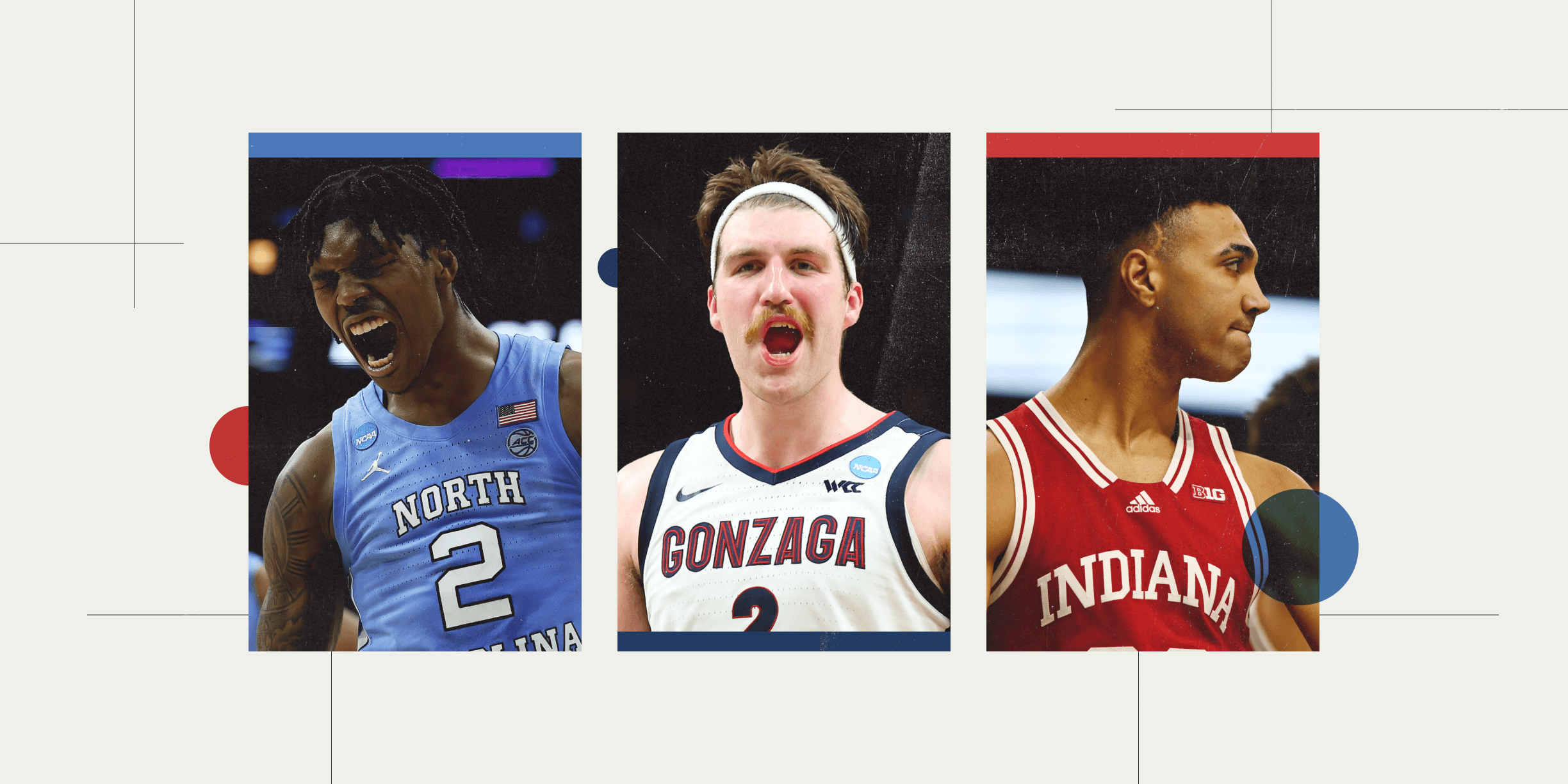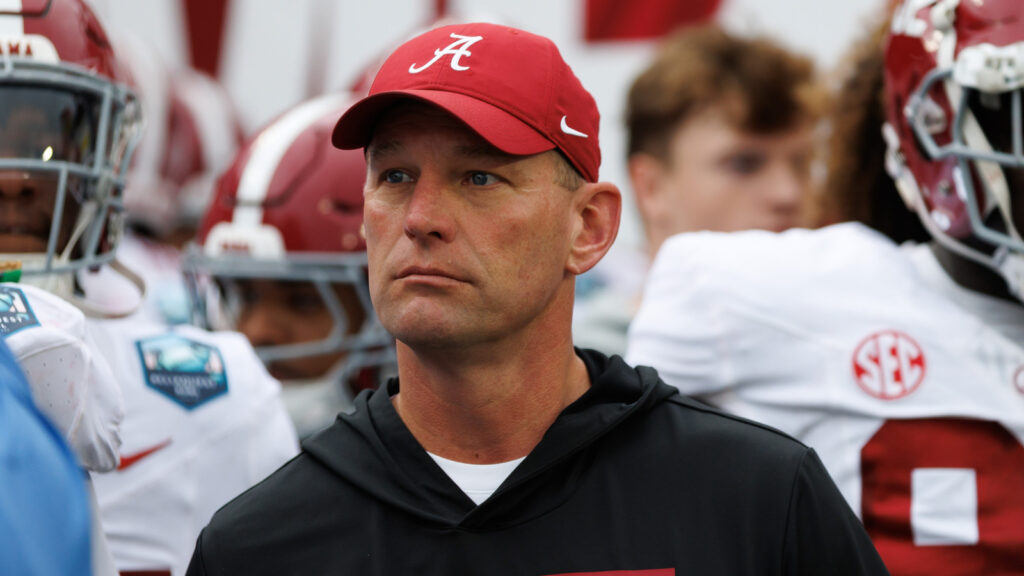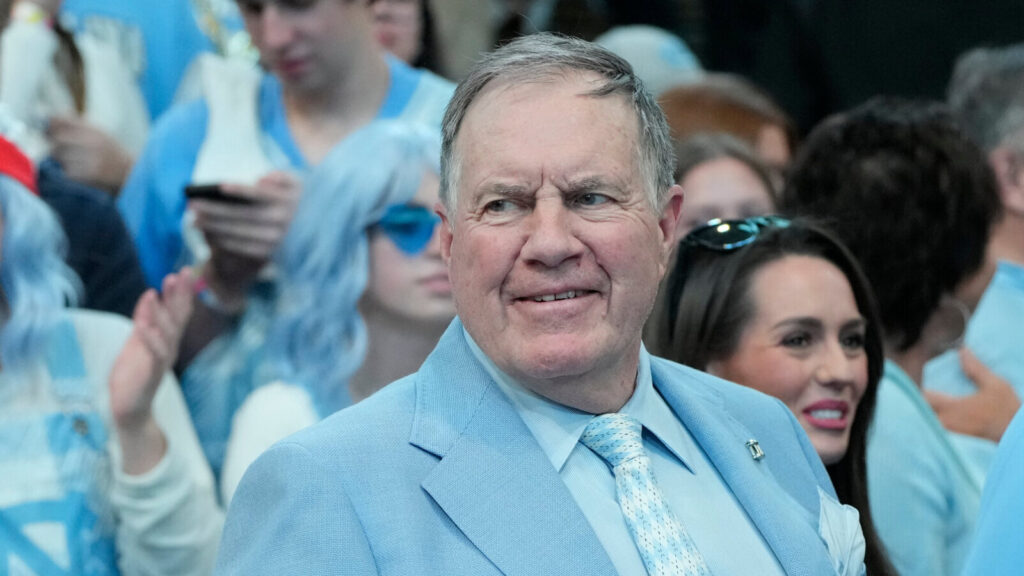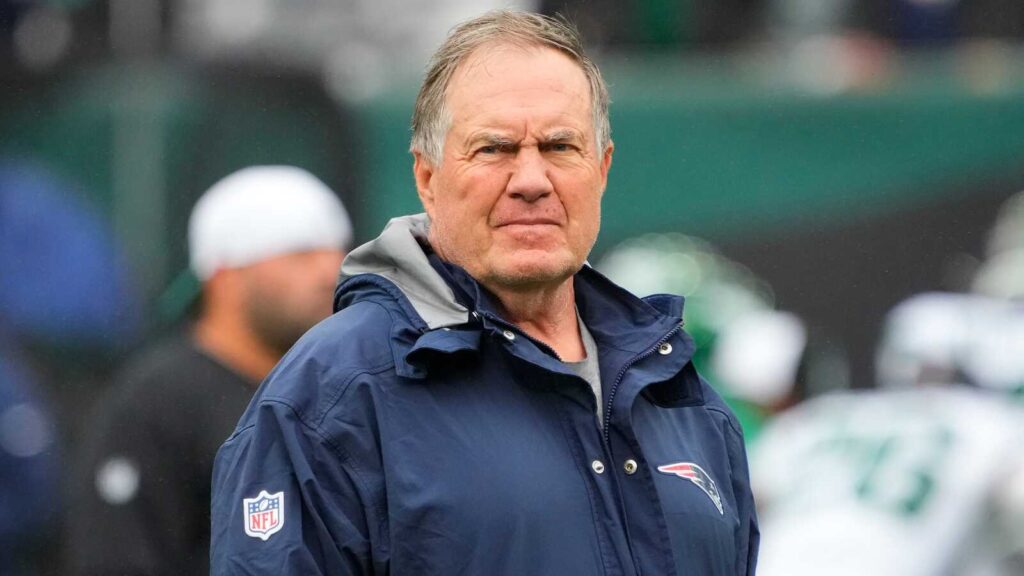It has been another topsy-turvy offseason in men’s college basketball. With all the transferring, shuffling in and out of the NBA Draft and NIL madness, it’s hard to recall who will playing where when the season tips off in about six weeks. In time, the unfamiliar will become familiar again, and the sport will resume its annual, titillating march to March.
A handful of players who will be taking the court this season have already made names for themselves. Many more will be trying to make their first real impressions. For those caught in between, the season presents another type of test — and opportunity — altogether. We know who they are, and we’ve seen them play. We just don’t quite know what to make of them yet.
In other words, they still have something to prove.
Thus, it is time once again to present my list of 25 players with something to prove. These guys generally fall into three categories: Players who tested (or considered testing) the NBA Draft waters, only to find out the pros didn’t want them; players whose season was a disappointment, either because of poor performance or injury; and players who transferred to give themselves a fresh start or the chance to go up against a higher caliber of competition.
For individuals as well as teams, there is much to be won and lost in the months ahead. Here are 25 guys who have an especially large stake in those outcomes:
25. Terquavion Smith, 6-4 sophomore guard, NC State
Casual basketball fans may be unfamiliar with Smith, who was ranked No. 94 in the Recruiting Services Consensus Index coming out of high school, but after he averaged 16.3 points, 4.1 rebounds and 2.1 assists as a freshman, he caught the attention of NBA scouts. Smith put his name in the draft but withdrew just hours before the June 1 deadline. He’ll garner a lot more attention heading into this season. His goal won’t just to bolster his NBA stock, but also to lead the Wolfpack back to the NCAA Tournament for the first time in five years and take some heat off sixth-year coach Kevin Keatts.
Likekele appeared to be headed for a big senior season at Oklahoma State after Cade Cunningham left in 2021 to be the No. 1 pick in the draft. That’s why Likekele was on my list last season. Alas, Likekele did not establish himself as a shooter the way the Pokes needed him to. The Cowboys went 15-15 (8-10 Big 12) and would not have played in the NCAA Tournament even if the NCAA hadn’t served them with a postseason ban. Likekele is hoping for a reset in Columbus, where the Buckeyes are replacing four starters from the squad that lost to Villanova in the second round of the NCAA Tournament.
Green was a pleasant surprise after transferring from Eastern Kentucky, and he gave the Tigers plenty of speed and grit. He ranked third in the SEC in assists (5.1 per game) and was third on the team in scoring (12.0), but too often Green’s aggressiveness led to poor shot selection and questionable decision-making late in games. Auburn will need Green to play with more maturity now that it does not have a high lottery pick like it did last season in Jabari Smith.
22. Kyle Lofton, 6-3 super senior guard, Florida
For the last four years, Lofton has been a really good mid-major player at a really good mid-major program. He started all 116 games at St. Bonaventure and led the Bonnies to a 76-43 record and their highest AP ranking (16) since 1970. Lofton decided to take advantage of the extra year of eligibility granted by the NCAA due to the COVID-19 pandemic to transfer to Florida. The two-time All-Atlantic 10 selection will likely be the Gators’ starting point guard from day one. It will be interesting to see what he can do against the big boys of the SEC.
Zakai Zeigler takes over the starting point guard job for Tennessee this fall. (Nathan Ray Seebeck / USA Today)
Kennedy Chandler was the more celebrated freshman point guard in Knoxville, but Zeigler was the spark off the bench. Now that Chandler has left for the NBA, Zeigler has the chance to prove himself as the full-time starter. The Long Island native may be diminutive in stature, but he used his quickness and guile to average 8.8 points and 2.7 assists in 22.1 minutes, and his 1.7 steals per game earned him a spot on the SEC’s All-Defensive team.
When Miles announced in April that he was withdrawing from the draft, he put the Horned Frogs in position to earn their highest preseason AP ranking in school history. Miles led TCU in scoring (15.4 points per game) and assists (3.8), and he is the best of the five starters who return from the squad that nearly knocked off No. 1 seed Arizona in the second round of the NCAA Tournament before falling in overtime, 85-80.
19. Sahvir Wheeler, 5-10 senior point guard, Kentucky
Wheeler generated high expectations when he transferred from Georgia, and in some respects, he lived up to them. Wheeler led the SEC in assists (6.9 per game) and averaged 10.1 points, but his horrid 3-point shooting (30.8 percent) made Kentucky far too easy to defend in the halfcourt. He also had a tendency to play too fast for his own good, like when he committed six turnovers in the Wildcats’ first-round loss to Saint Peter’s. Wheeler will need to be a lot more efficient this season, but his 0-of-9 shooting from 3-point range during four summer exhibition games in the Bahamas was not an encouraging sign.
18. L.J. Cryer, 6-1 junior guard, Baylor
Cryer was arguably Baylor’s best player during the first month of the season. Then he re-injured the right foot which had undergone surgery over the summer, and while he tried to play through the pain for a while, he finally had to shut his season down in mid-February. Now Cryer is healthy and ready to rejoin a Bears squad that should contend for a national title. His ability to co-exist with ultra-talented freshman guard Keyonte George and 6-3 senior guard Adam Flagler will determine what kind of season Baylor has, and where Cryer’s pro stock is valued next spring.
? @LjCryer #SicEm | #CultureofJOY pic.twitter.com/xbJpSIjpan
— Baylor Men’s Basketball (@BaylorMBB) September 12, 2022
Bradley was one of the Pac-12’s leading scorers his last two years at Cal, but he transferred to San Diego State in hopes of taking his talents to the NCAA Tournament. His offensive output dipped slightly (16.9 points per game, down from 18.0 as a junior), and the team lost its last two games in close fashion — by one point to Boise State in the Mountain West tournament final, and by three points in overtime to Creighton in the first round of the NCAA Tournament. San Diego State is again the Mountain West favorite, which will give Bradley one last shot to win an NCAA Tournament game before his sterling college career is done.
16. Kendric Davis, 5-11 super senior guard, Memphis
Davis toiled in obscurity the last three years at SMU, but everyone around the American Athletic Conference knew who he was. Davis led the AAC in scoring in each of the last two seasons, and was in the top three in assists in the league each year. Yet, Davis has never played in the NCAA Tournament, including in his first season at TCU. He hopes to rectify that omission at Memphis, which is facing a major rebuild after losing eight of its top nine scorers from last season.
15. Jalen Wilson, 6-8 junior forward, Kansas
Wilson was suspended for the first three games last season following a DUI arrest, and it took him a while to rediscover his confidence. Though he was an important contributor in the Jayhawks’ run to the national championship, he played a complementary role. Now Wilson is the lone returning starter for a squad that is once again in position to contend for Big 12 and NCAA championships. The Jayhawks’ ability to fulfill those lofty goals will depend heavily on Wilson’s ability to excel as a featured player.
14. Terrence Shannon Jr., 6-6 senior guard, Illinois
Shannon’s decision to withdraw from the draft last year was supposed to set up a big junior season at Texas Tech. That scenario never panned out as Shannon battled a back injury in December and January that cost him eight games, and never quite rediscovered his form. His scoring average dropped from 12.9 to 10.4, and when the season ended Shannon entered the transfer portal. It looked for a while like he would end up at Michigan, but instead he opted for Illinois. The move brings Shannon back to his home state, which could either provide a higher level of comfort or a greater degree of pressure.

With Johnny Juzang gone, UCLA will look to Jaime Jaquez Jr. to handle the bulk of the scoring load. (Bill Streicher / USA Today)
Johnny Juzang may have been the glamorous scorer on UCLA’s 2021 Final Four team, but Jaquez was the heart and soul. He averaged 13.9 points, 5.7 rebounds and 2.3 assists last season, but he was plagued by a pair of sprained ankles, and his 3-point shooting plummeted from 39.4 to 27.6. With Juzang and two other starters gone, Jaquez enters the season as the unquestioned leader of the program and a popular choice for preseason All-America.
Sasser looked like he was heading for an All-America season when he was sidelined by a toe injury in December. He put his name in the draft and performed well at the league’s combine, but he opted to return for what could be a special season at Houston, which will begin the season as a consensus top-five team. The Cougars will be bolstered by the arrival of stud freshmen Jarace Walker and Terrance Arceneaux, but Sasser, who was averaging 17.7 points per game on 43.7 percent 3-point shooting when he went out, will be needed to provide offense and leadership. Ending the season at the Final Four would be extra special considering it will be held in Houston next April.
The Blue Devils’ run to the Final Four happened partly because Roach performed at a much higher level than he had during the regular season. In Duke’s first four NCAA Tournament games, Roach averaged 3.8 assists and 12.8 points on 51.4 percent shooting. Alas, he reverted to form in the Final Four, shooting 2 of 11 (0 of 5 from 3) in Duke’s loss to North Carolina. While the Blue Devils lost five underclassmen to the NBA, Roach returns as the wily veteran whose task will be to lead another heralded recruiting class in Jon Scheyer’s first season as head coach.
10. Kerr Kriisa, 6-3 junior guard, Arizona
The Wildcats were the surprise team in college basketball last season, and if Kriisa wasn’t the biggest reason why, he was certainly the loudest. The Estonia native played with great flair and emotion, ranking second in the Pac-12 in assists at 4.7 per game while also averaging 9.7 points and 2.5 rebounds. Kriisa suffered a major ankle injury in the Pac-12 tournament, and he came back to shoot a combined 1 of 17 (all 3-pointers) in two NCAA Tournament games. Now Arizona has to replace three starters, which puts a heavier burden on Kriisa to develop his game. That means not being so heavily reliant on the long ball. During his first two seasons in Tucson, Kriisa launched a whopping 83.9 percent of his shots from behind the 3-point line.
9. Andre Curbelo, 6-1 junior guard, St. John’s
Curbelo began his sophomore season at Illinois as a preseason All-Big Ten selection, but he suffered a serious concussion during an exhibition game in late October, and he never got on track. Curbelo missed 11 straight games in November, December and January, and after he finally came back he had to miss two more because he got infected with COVID-19. After playing just 10 minutes and failing to score in the Illini’s NCAA Tournament second-round loss to Houston, Curbelo transferred to St. John’s. The move gives him a chance to play in the city where he lived since he was 13, and feel the love from the Big Apple’s vibrant Puerto Rican community.

Nijel Pack made waves when he left Kansas State for lucrative NIL deal at Miami. (Jay Biggerstaff / USA Today)
8. Nijel Pack, 6-0 junior guard, Miami
When Pack decided to transfer from Kansas State, where he averaged 17.4 points per game last season, to Miami, few people outside hard-core college basketball fans paid attention. That changed when wealthy UM alum John Ruiz revealed that he had inked Pack to a two-year, $800,000 endorsement deal to promote some of Ruiz’s companies. As a result, the agent for Miami’s best returning player, Isaiah Wong, indicated he was likely to transfer, though Wong quickly backed off that stance. Now it’s up to Pack to prove that he was worth all that money, and all that fuss.
7. Emoni Bates, 6-9 sophomore forward, Eastern Michigan
This week’s news that Bates had been arrested for allegedly carrying a concealed weapon in a car he was driving was just the latest indication that he is a long way to go to prove he was worth all that hype. His freshman season at Memphis was a colossal disappointment. Bates averaged just 9.7 points on 38.6 percent shooting (32.9 from 3-point range). When he missed 12 games in February and March for what was described as lingering back issues, there was rampant scuttlebutt that Bates simply didn’t want to play, although he did come back for the Tigers’ two NCAA Tournament games. Bates could have been one of the few returning players at Memphis, but instead he decided to transfer to a mid-major school that is in the same town where he grew up.
6. Caleb Love, 6-4 junior guard, North Carolina
Love will forever be remembered for what he did in the NCAA Tournament. He averaged 18.8 points over six games and hit one of the most dramatic shots in program history when his 3-pointer with 24.8 seconds left eliminated Duke in the Final Four. That made it easy to forget that Love was plagued during the regular season by inconsistency and inefficiency. He averaged 15.9 points for the Heels, but he shot 37.1 percent and committed 2.7 turnovers per game. That raised enough concerns with NBA scouts that Love didn’t even test the draft waters. If he keeps playing like he did toward the end of last season, he’ll be in much higher demand next time around.
As my colleague Brian Hamilton pointed out in calling Edey the most intriguing player heading into the season, there is nowhere for the Big Maple to hide now that Trevion Williams is gone. The center position belongs completely to Edey, and he will have to make sure that his body is strong enough to handle the extra minutes and the extra pounding. Edey will also need to develop his footwork so he is not so vulnerable defending ball screens in space, a weakness that was deftly exploited by Saint Peter’s in the Sweet 16.
4. Marcus Carr, 6-2 super senior guard, Texas
Carr was also No. 4 on this list a year ago, and the only thing he proved was that he has more work to do. After transferring from Minnesota, Carr’s scoring average plunged from 19.4 to 11.4 points per game, and the Longhorns’ season ended in the second round of the NCAA Tournament. Unlike in 2021, Carr did not put his name in the draft and instead decided to return to Austin for one more season. His production in Texas’ NCAA Tournament games against Virginia Tech and Purdue (combined 38 points, 16 assists and 3 turnovers) bodes well for his super senior season, and the arrival of sophomore point guard Tyrese Hunter from Iowa State should make the Longhorns’ offense run more efficiently.
3. Baylor Scheierman, 6-6 senior guard, Creighton
Scheierman’s decision in May to transfer to Creighton ensured that the Bluejays will have the highest preseason AP ranking in program history. The Aurora, Neb., native showed at South Dakota State that he can score in bunches (16.2 points per game on 46.9 percent 3-point shooting), but now he will be playing against a much higher level of competition. Scheierman will not have to carry the load alone as this roster is teeming with up-and-coming talent, but his ability to make the transition to a power conference will determine whether Creighton is able to make it past the Sweet 16 for the first time.
From an individual standpoint, Timme has nothing left to prove as a college player. He has played in an NCAA championship game, was voted to multiple All-America teams last season, and enters his senior year as a consensus preseason first-team All-American. Timme, however, pulled his name out of the draft because he was not going to be a first-round pick, so he has a lot of ground to make up with NBA scouts who fret about his defense and lack of shooting range. If Timme can also deliver Mark Few that elusive national championship, it would be a storybook end to a great career.
Jackson-Davis technically has another season of eligibility, but this feels like a boom-or-bust moment for him as well as the Hoosiers. His decision to withdraw from the draft made Indiana the consensus favorite in the Big Ten. Jackson-Davis is an in-state kid (he grew up in Greenwood, just south of Indianapolis) who came to IU with loads of hype, but he has just one NCAA Tournament victory to show for it — and that came in the First Four last season. Now, it’s up to Jackson-Davis to lead the Hoosiers deep into March and play himself into the first round of the draft.
(Illustration: Sean Reilly / The Athletic: Photos: Abbie Parr, Patrick Smith, Quinn Harris / Getty Images)






